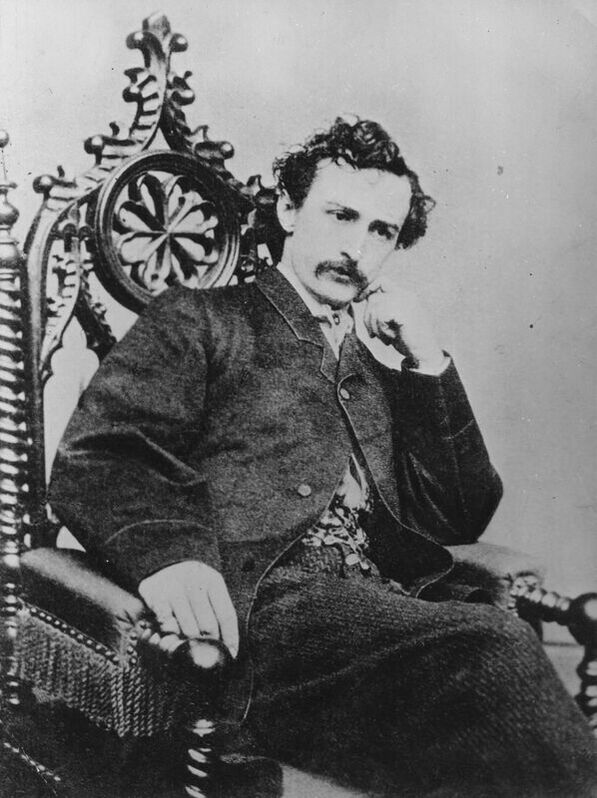October 21, 2020
Frontier Tales
By Rebecca Huffstutler Norton
The Bandera Prophet
Frontier history is filled with myths and legends, fanciful stories that leave one scratching the old noggin wondering – could that be true? One such mystery involves a president, an actor and a schoolteacher who taught right here in the Texas Hill Country.
On the night of April 14, 1865, President Lincoln was tragically assassinated by the actor John Wilkes Booth while Lincoln sat and watched a play at the Ford’s Theatre in Washington DC. After committing the murder, the assassin leapt unto the stage and exclaimed, “Sic semper tyrannis!” [Thus, always to tyrants] and “The South is avenged!” Brandishing a large dagger, he made his escape. He was later found in a barn in Virginia where he refused to surrender. The barn was set ablaze and Booth was shot and killed while fleeing the flames. His four accomplices were tried by a military commission and this is where the proverbial plot thickens. During the trial, one of the accused was adamant that the man shot at the burning barn was not John Wilkes Booth, that Booth had indeed escape again.
Booth came from a prominent Southern family and was highly educated. With his dark hair and debonair mustache, he was known to be a cultured and refined gentleman. Around 1878, a man fitting this description, but calling himself William Ryan, arrived in Bandera. He accepted a job herding sheep on the E. M. Ross Ranch on Julian Creek. One night, Ryan participated in an old-fashioned spelling match, that being a popular form of entertainment for the time. It is said he “spelled down” the competition quite easily. Since the school was in need of a teacher, he was offered the job.
He taught there for several months before opening his own school, the Bandera Institute in 1880. His advertisement read in part, “Bandera Institute. W. J. Ryan, Principal. The scholastic year continues for ten months. Primary branches, $1.50; intermediate branches $2.00; higher branches, with Latin, Greek and German, $2.50.” There continued to be mention of the school in the Bandera Bugle, including one in which the school produced light dramas with a brass band. Latin and drama – skills of a former actor? By 1883, Ryan suddenly left Bandera under suspicious circumstances. Engaged to be married to the daughter of a prominent family and with a wedding date already announced, he disappeared amidst rumors that he was secretly a fugitive from justice from another state. The wedding was called off, the poor bride grew old without ever marrying another, and Ryan was never seen nor heard of again. It was only in later years, the townsfolk began to wonder if the teacher was really the infamous John Wilkes Booth.
This small-town talk may have quietly died away, but in 1907, a lawyer, Finis L. Bates of Granbury, wrote a book about a client, John St. Helen, who claimed he was actually John Wilkes Booth before he committed suicide in 1903 in Enid, Oklahoma. Mr. Bates stated his client used several aliases including Marrs, George and, yes, Ryan!
On the night of April 14, 1865, President Lincoln was tragically assassinated by the actor John Wilkes Booth while Lincoln sat and watched a play at the Ford’s Theatre in Washington DC. After committing the murder, the assassin leapt unto the stage and exclaimed, “Sic semper tyrannis!” [Thus, always to tyrants] and “The South is avenged!” Brandishing a large dagger, he made his escape. He was later found in a barn in Virginia where he refused to surrender. The barn was set ablaze and Booth was shot and killed while fleeing the flames. His four accomplices were tried by a military commission and this is where the proverbial plot thickens. During the trial, one of the accused was adamant that the man shot at the burning barn was not John Wilkes Booth, that Booth had indeed escape again.
Booth came from a prominent Southern family and was highly educated. With his dark hair and debonair mustache, he was known to be a cultured and refined gentleman. Around 1878, a man fitting this description, but calling himself William Ryan, arrived in Bandera. He accepted a job herding sheep on the E. M. Ross Ranch on Julian Creek. One night, Ryan participated in an old-fashioned spelling match, that being a popular form of entertainment for the time. It is said he “spelled down” the competition quite easily. Since the school was in need of a teacher, he was offered the job.
He taught there for several months before opening his own school, the Bandera Institute in 1880. His advertisement read in part, “Bandera Institute. W. J. Ryan, Principal. The scholastic year continues for ten months. Primary branches, $1.50; intermediate branches $2.00; higher branches, with Latin, Greek and German, $2.50.” There continued to be mention of the school in the Bandera Bugle, including one in which the school produced light dramas with a brass band. Latin and drama – skills of a former actor? By 1883, Ryan suddenly left Bandera under suspicious circumstances. Engaged to be married to the daughter of a prominent family and with a wedding date already announced, he disappeared amidst rumors that he was secretly a fugitive from justice from another state. The wedding was called off, the poor bride grew old without ever marrying another, and Ryan was never seen nor heard of again. It was only in later years, the townsfolk began to wonder if the teacher was really the infamous John Wilkes Booth.
This small-town talk may have quietly died away, but in 1907, a lawyer, Finis L. Bates of Granbury, wrote a book about a client, John St. Helen, who claimed he was actually John Wilkes Booth before he committed suicide in 1903 in Enid, Oklahoma. Mr. Bates stated his client used several aliases including Marrs, George and, yes, Ryan!


